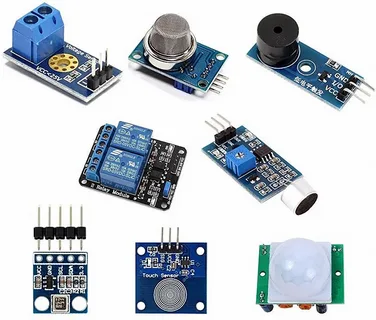In today’s fast-evolving technological landscape, the term sensor is becoming increasingly important. Sensors play a crucial role in everything from smartphones and smart homes to industrial automation and healthcare. This article dives deep into what a sensor is, its various types, applications, and the future of sensor technology.
What is a Sensor?
A sensor is a device that detects and responds to changes in an environment. It converts physical parameters like temperature, pressure, humidity, motion, or light into signals that can be read and processed by machines or humans. The information collected by sensors is essential for monitoring, analysis, and control in countless systems and devices.
Types of Sensors
Sensors come in many forms, each designed to detect specific environmental changes. Here are some of the most common types:
1. Temperature Sensors
Temperature sensors measure heat or temperature. They are widely used in weather monitoring systems, medical devices, and HVAC systems. Thermocouples and thermistors are common examples.
2. Proximity Sensors
Proximity sensors detect the presence or absence of an object within a certain range. They are frequently used in parking sensors, smartphones, and industrial machines.
3. Pressure Sensors
These sensors measure pressure in gases or liquids. Automotive systems, hydraulic machines, and weather instruments often use pressure sensors.
4. Motion Sensors
Motion sensors detect movement. They are commonly found in security systems, smart lighting, and gaming devices.
5. Light Sensors
Light sensors measure light intensity. Devices such as smartphones and solar panels rely on light sensors to adjust screen brightness or track sunlight.
6. Humidity Sensors
Humidity sensors detect moisture levels in the air. They are essential in agriculture, meteorology, and HVAC systems.
7. Gas Sensors
These sensors detect the presence of gases such as CO2, methane, or smoke. They are crucial for environmental monitoring, industrial safety, and home security.
Applications of Sensors
The application of sensors is virtually limitless. Here are a few key areas where sensor technology is making a big impact:
1. Consumer Electronics
Modern smartphones are packed with sensors including accelerometers, gyroscopes, proximity sensors, and fingerprint sensors. These components enhance user experience, security, and device performance.
2. Automotive Industry
Sensors are integral to advanced driver-assistance systems (ADAS), such as automatic braking, lane assist, and parking aids. Engine performance, fuel management, and tire pressure are also monitored using sensors.
3. Healthcare
In medical equipment, sensors monitor vital signs like heart rate, oxygen levels, and body temperature. Wearable health devices use sensors to track fitness and health metrics in real-time.
4. Industrial Automation
In factories, sensors are used to monitor processes, detect faults, and ensure safety. Smart factories depend heavily on sensor networks for efficient production and maintenance.
5. Smart Homes
From thermostats to security systems, sensors help make homes smarter and more energy-efficient. Motion detectors, temperature sensors, and smoke detectors enhance comfort and safety.
6. Environmental Monitoring
Sensors help track pollution levels, weather conditions, and natural disasters. They play a critical role in sustainable development and environmental conservation.
Future Trends in Sensor Technology
As technology advances, so does the development of smarter, smaller, and more efficient sensors. Here are some exciting trends shaping the future of sensor technology:
1. Internet of Things (IoT)
IoT devices rely on sensors to collect data and communicate with other devices. The growth of IoT is pushing the demand for low-power, wireless, and multifunctional sensors.
2. Artificial Intelligence (AI) Integration
Combining sensors with AI enables smarter decision-making. For instance, AI-powered cameras use image sensors and machine learning to recognize faces or detect anomalies.
3. Flexible and Wearable Sensors
New materials allow sensors to be embedded into fabrics or worn on the skin. These innovations are revolutionizing healthcare and fitness tracking.
4. Energy Harvesting Sensors
These sensors generate their own power from light, heat, or motion, eliminating the need for batteries and enabling long-term monitoring in remote locations.
Conclusion
The role of sensors in modern life cannot be overstated. From enhancing everyday devices to powering industrial automation and smart cities, sensors are everywhere. As technology continues to evolve, sensors will become even more intelligent, compact, and integrated into our lives. Businesses and individuals alike should stay informed about this growing field to harness its full potential.




